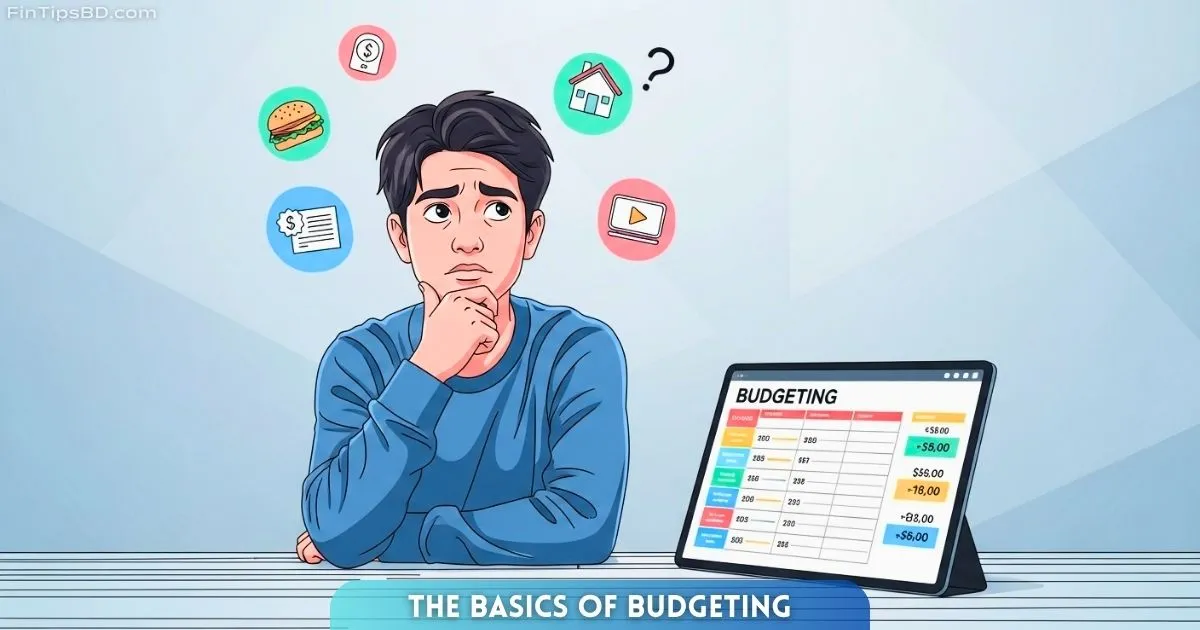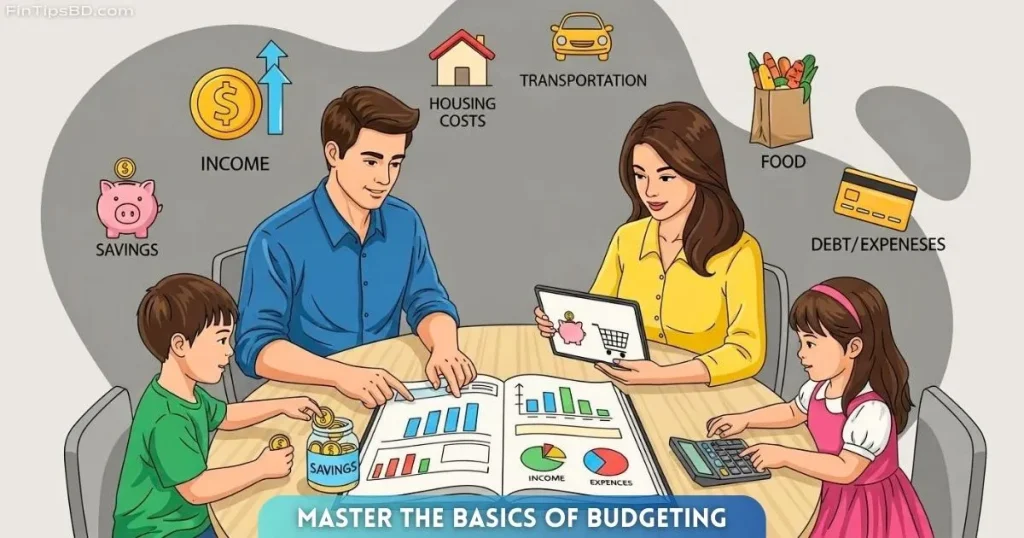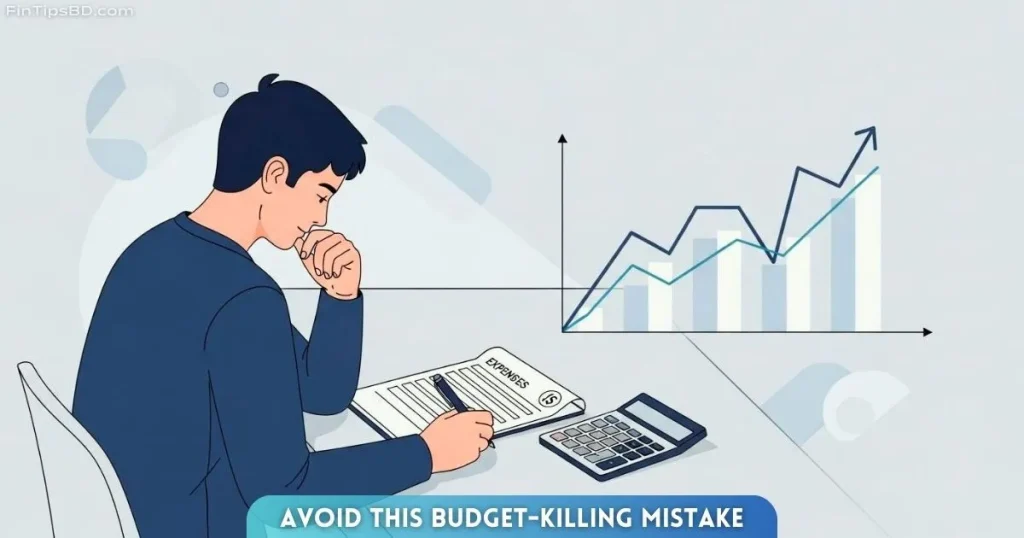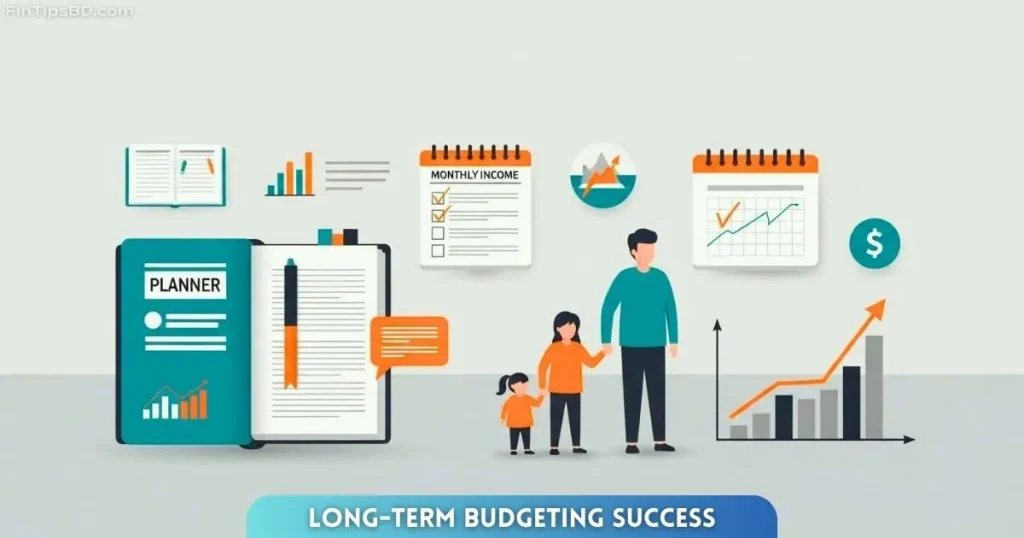The Basics Of Budgeting – The Shocking Mistake 80% Of Beginners Make

Managing your finances might seem straightforward in theory, but when it comes to the basics of budgeting, many newcomers trip up right from the start. In fact, recent studies reveal that close to 80% of beginner budgeters give up on their plan within the first three months. Why? There’s one commonly overlooked error that quietly disrupts financial progress before it even gets going.
Let’s break down how to sidestep this common mistake and learn how to create a realistic, personalized budget that truly fits your lifestyle. Whether you’re exploring budgeting for beginners or trying to fine-tune your current plan, getting these core concepts down is essential.
Table Of Contents
What Are the Basics of Budgeting?

At its heart, budgeting means giving every dollar a job rather than wondering where your cash disappeared. It’s about recognizing how much money is coming in and how much is going out, so you can take control, cut down debt, and plan ahead. Consider it your personal financial blueprint, leading you toward your money goals. It plays a vital role in financial planning basics.
Key Elements of Budgeting
If you’re still getting used to managing your monthly budget, these fundamental ideas will help you get a solid grasp of the basics of budgeting:
- Know Your Income: Figure out your monthly income after taxes and deductions—your actual take-home pay. Be sure to include any side gigs or freelance payments to have a full picture.
- Track Your Expenses: This means everything—rent, groceries, entertainment, coffee stops, even tiny impulse purchases. Carefully tracking expenses is crucial for building an accurate budget.
- Set Clear Goals: A budget isn’t just about limiting spending; it’s about reaching meaningful targets like building an emergency fund, saving for a house, or knocking out credit card debt. Goals give your spending plan direction and drive.
- Create a Spending Strategy: Break your expenses into categories—housing, utilities, groceries, transportation, savings, and fun money. This helps you be intentional about where your money goes.
- Review and Tweak Often: Budgets aren’t one-and-done. As your financial situation shifts, your budget should adapt too. Ongoing review and minor tweaks keep it relevant and effective.
Learning the basics of budgeting empowers you to align your everyday choices with your bigger financial picture. But there’s one major blunder that can throw even the best-laid plans off track.
The Surprising Mistake 80% of New Budgeters Make
Many people believe that simply creating a budget is enough. They find a template or download an app, toss in a few estimates, and feel like they’ve taken charge. But here’s the catch: relying on guesses instead of carefully monitoring spending is where most beginners go off course. This is one of the most frequent beginner budgeting mistakes.
Why It’s Such a Problem
Budgeting for beginners based on guesses is like trying to drive with a fogged-up windshield. Your view is unclear, and eventually, you’re bound to hit something. Common issues include:
- Underestimating minor purchases like daily snacks, multiple streaming subscriptions, or frequent ride-hailing. These small expenses—often called “latte factors”—add up fast.
- Overlooking occasional costs such as yearly software renewals, car repairs, or holiday gifts. Missing these can mess up your monthly plan big time.
- Misjudging variable expenses like utility bills (which change seasonally) or grocery costs (which shift based on eating habits or sales).
What’s the result? A budget that looks perfect on paper but quickly crumbles in practice, leading to frustration and eventual abandonment.
A Real-Life Example
Meet Sarah—a recent college graduate aiming to stick to a $500 budget for her personal spending each month. She casually assigns $50 for “entertainment,” unaware of how quickly weekend hangouts, spontaneous food deliveries, and her streaming subscriptions will add up. By week two, she’s already overspent, frustrated, and feeling like budgeting just isn’t realistic. Like many others, she throws in the towel before she ever learns how to start budgeting properly.
How to Avoid This Budget-Killing Mistake

If you’re serious about building a budget that sticks and doesn’t fall apart after a few weeks, you need to ditch the guesswork. Real numbers, not rough guesses, are the foundation of smart financial habits. This mindset is at the heart of solid personal budgeting tips.
Track Every Single Expense First
Before you begin assigning dollar amounts to your categories, start by tracking your actual spending for at least 30 days. Use practical budget management tools like mobile budgeting apps (Mint, YNAB, or Goodbudget), or simply jot things down in a notebook. Log everything: rent, bus fare, coffee, even that $1 snack from the vending machine. Every transaction matters.
Be Real and Stay Consistent
Lots of people skip logging small purchases or ones they’re embarrassed about, but skipping those means you’re working with incomplete info. Being fully honest is non-negotiable for building a budget you can actually follow.
- Keep your receipts or use your banking app and credit card history to track spending easily.
- Set a daily alarm to remind yourself to enter your expenses.
- As you log each expense, group them into broad categories like groceries, transportation, or entertainment. This makes things easier to review later.
Review the Data
Once you complete a month of expense tracking, sit down and total how much you spent in each category. You’ll likely be surprised at how much is going toward unplanned, emotional, or impulse buying. This reflection gives you a solid, data-backed starting point for your first real budget. Skipping this part is why so many people fall into common beginner budgeting mistakes.
Step-by-Step Budgeting: Crafting Your Monthly Plan
Now that you’ve tracked your spending and have a clear understanding of your habits, it’s time to create a workable monthly budget. Follow this guide for building a plan you can actually stick to. This is your action plan for how to start budgeting the right way.
Step 1: Figure Out Your Monthly Income
Start by figuring out your total monthly income after taxes. That includes your paycheck and any extra income from freelance work, side gigs, or commissions. Always base your budget on your actual net income—not your gross pay.
Step 2: Divide Your Spending
Use the data from your 30-day tracking period to sort your spending into two groups: fixed and variable expenses.
- Fixed costs stay the same every month (like rent, car payments, or insurance).
- Variable costs change month-to-month (like gas, groceries, or entertainment).
Knowing the difference helps you see what you can adjust and what stays locked in.
Step 3: Set Real Financial Goals
What do you want your money to do for you? Whether it’s starting an emergency fund, saving for a vacation, clearing credit card debt, or investing for your future, having clear goals gives your budget real meaning. Set both short-term and long-term goals so you can track progress and stay encouraged.
Step 4: Pick a Budgeting Style That Suits You
Not every method works for everyone. Try out a few to see what fits your lifestyle. Here are a few beginner-friendly options to get started with a simple budget method:
- 50/30/20 Rule: Split your money into 50% for needs (housing, transportation), 30% for wants (entertainment, eating out), and 20% for savings and debt payoff.
- Zero-Based Budgeting: Assign every dollar to a job—whether it’s spending, saving, or paying down debt—so there’s no money left unplanned.
- Envelope System: If you prefer cash, divide your money into envelopes by category. When the envelope is empty, spending in that category stops until next month. This hands-on method helps curb overspending.
Step 5: Build Your Monthly Budget
Now that you’ve got real spending data and have picked a budgeting method, it’s time to set spending limits for each category. Use your actual tracked expenses as a guide, but make smart decisions about where to cut back so you can meet your financial goals. This is when your work from tracking expenses becomes incredibly useful.
Ask yourself:
- Can you spend less on takeout or streaming services?
- Are you overpaying for subscriptions or unused memberships?
- Can you reallocate money toward savings or debt repayment?
Your first monthly budget won’t be perfect, but it’ll be real—and that’s what matters most.
Step 6: Check In Weekly and Make Adjustments
Budgeting isn’t a one-and-done task—it’s an ongoing habit. Make it a routine to review your budget weekly or every other week. This helps you stay on track, make small adjustments, and handle surprises like medical bills or car repairs without panic. Life is unpredictable, so your budget should be flexible enough to keep up.
By monitoring regularly, you stay in control and reduce the chances of slipping into bad habits or financial stress. This is key when it comes to managing monthly budget effectively.
Helpful Budget Management Tools for First-Timers
Getting started is much easier with the right resources. Below are some excellent tools and platforms to support your journey into the basics of budgeting:
Budgeting Apps
- Mint: A widely used free app that links to your bank accounts and automatically tracks and categorizes your expenses. It’s great for visualizing your spending and simplifying your budget.
- YNAB (You Need A Budget): Focused on zero-based budgeting, YNAB encourages you to give every dollar a job. It might take time to learn, but many users find it life-changing.
- Goodbudget: Designed for digital envelope budgeting. You allocate money into virtual envelopes for categories like food, entertainment, and rent. It’s ideal for those who prefer a structured approach without cash.
Spreadsheets
- Google Sheets or Excel: If you prefer a hands-on method, budgeting templates let you customize and track everything yourself. Many free templates online are beginner-friendly and allow you to take full control.
Educational Resources
- Books:
- The Total Money Makeover by Dave Ramsey offers a straightforward plan to pay off debt and build wealth.
- Your Money or Your Life by Vicki Robin helps reshape your mindset around money and spending.
- The Total Money Makeover by Dave Ramsey offers a straightforward plan to pay off debt and build wealth.
- Podcasts:
- The Ramsey Show, Money Guy Show, and Afford Anything are all packed with practical advice and personal budgeting tips, especially for beginners.
- The Ramsey Show, Money Guy Show, and Afford Anything are all packed with practical advice and personal budgeting tips, especially for beginners.
Tips for Long-Term Budgeting Success

Getting started is just the first step. The real win is building a budget that lasts. Here are a few proven tips to help your budgeting habits stick:
- Automate Your Savings: Set up automatic transfers so a portion of your income goes straight into your savings account. This helps build your emergency fund without thinking about it.
- Start Small, Improve Monthly: Don’t stress about creating a perfect plan right away. Use your first few months to refine your budget based on what you learn.
- Don’t Give Up After a Slip-Up: Everyone overspends now and then. What matters is getting back on track instead of quitting. Adjust and move forward.
- Celebrate Your Wins: Whether you stayed under your grocery budget or hit a savings target, take time to acknowledge those wins. It keeps you motivated.
- Find Support: Having an accountability partner or joining a budgeting group can make a big difference. Sharing your goals can provide encouragement when your motivation dips.
Conclusion: Budgeting Without Real Data Is Like Walking Blindfolded
Mastering the basics of budgeting goes far beyond filling out a worksheet or using a shiny app. It’s about understanding your personal habits, tracking expenses honestly, and building a system based on your real financial life—not on wishful thinking.
By avoiding the common mistake of guessing your numbers, you’ll set yourself apart from the 80% who give up early. If you’re ready to gain control and build confidence in your finances, start today by writing down every expense. That simple action will bring you clarity, motivation, and the tools you need for lasting financial peace.
